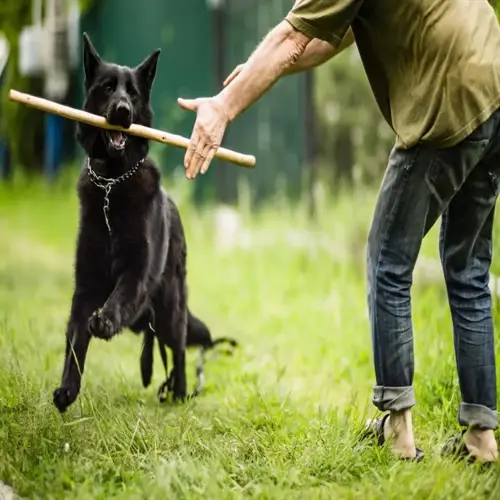How should I transition my dog to new food?

Written by
Elin Eriksson
Reviewed by
Prof. David Walsh, Ph.D.To prevent digestive upset in your dog, transitioning to new food should involve a gradual transition over 9 - 10 days. An abrupt change in feeding can upset the dog's gut flora, leading to diarrhea or vomiting. Follow a structured schedule for mixing the old and new food, allowing the dog's system time to adjust. You should also monitor your dog's stool consistency frequently during the transition period.
Initial Phase (Days 1-3)
- 25% new food: Mixed thoroughly with 75% current food
- Meal frequency: Maintain regular feeding schedule
- Hydration: Ensure constant access to fresh water
- Observation: Note energy levels and appetite changes
Mid Transition (Days 4-6)
- 50% mixture: Equal parts new and current food
- Probiotic support: Add plain pumpkin or probiotic supplements
- Consistency check: Monitor stool formation daily
- Adjustment: Slow down if loose stools occur
Final Phase (Days 7-9)
- 75% new food: With 25% current food
- Full transition: Day 10 switch to 100% new food
- Portion control: Verify feeding amounts match calorie needs
- Long-term monitoring: Watch for allergies or sensitivities
There are also special transition considerations for puppies, seniors, and those with health problems. Puppies require extra monitoring due to potential growth implications, while seniors need more time, such as 14 days for transition, because of their sensitive digestive systems. Additionally, dogs with kidney trouble or diabetes require veterinary supervision. For patients with compromised health, I always recommend blood work before any major dietary changes.
Using proper food introduction techniques can help with acceptance as follows: slightly warm up the food, which is wet, as this helps with the smell. For kibble, try adding a low-sodium broth. Feed at the same times and in the same spots. You might try puzzle feeders to engage their interest. I've seen most picky eaters accept new foods after some time and with the use of positive reinforcement techniques.
Following transition monitor long-term signs of successful adaptation. Look for constant energy levels, a shiny coat, and firm stools. Weigh your dog monthly to ensure he is consuming sufficient calories. Schedule follow-up vet appointments to ensure sufficient nutrition is being consumed. Good transitions lay the groundwork for all your dog's lifelong dietary needs.
Read the full article: Dog Food Ingredients: The Essential Guide

